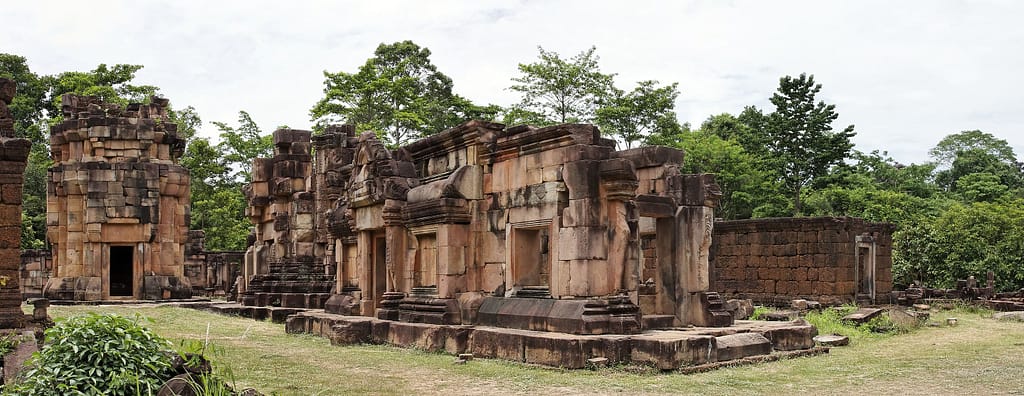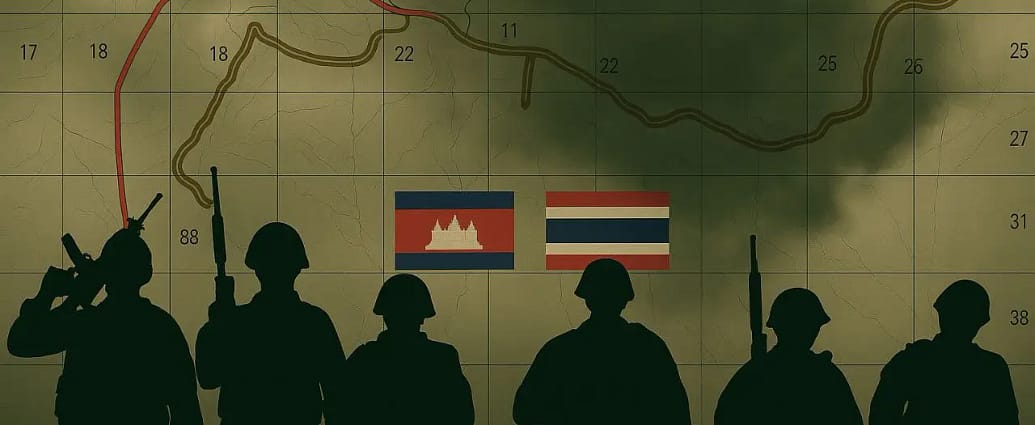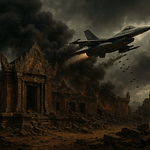Introduction: A Border on Edge
On July 24, 2025, multiple disputed border regions, including the Ta Moan Temple Complex Area, Preah Vihear and other sites along the Dangrek Mountains, became the epicenter of violent clashes between Thai and Cambodian troops. These ancient Khmer ruins, spanning 9th- to 12th-century heritage, have reignited a century-old border dispute, raising fears of a broader conflict. What sparked this latest escalation and what does it reveal about the fragile balance of history, nationalism and geopolitics in Southeast Asia?

Breaking Down the Conflict
What Is Happening?
The conflict spans several contested zones, including the Ta Moan Temple Complex Area (between Cambodia’s Oddar Meanchey province and Thailand’s Surin province), the Preah Vihear Temple (awarded to Cambodia by the ICJ in 1962 but with contested surrounding land) and other sites like Phnom Trop and the Dangrek Mountain passes. On July 24, 2025, fighting erupted after Thai forces allegedly fired on a Cambodian military base near Ta Muen Thom, prompting Cambodia to deploy BM-21 rocket launchers and drones with Thailand escalating further by conducting airstrikes on Cambodian military targets across these areas.
Who’s Involved?
- Cambodia: Asserts sovereignty over the Ta Moan Temple Complex Area, Preah Vihear and other historical sites, citing Khmer heritage and accusing Thailand of territorial violations. Prime Minister Hun Manet has called for an urgent UN Security Council meeting to address Thailand’s “aggression.”
- Thailand: Claims these areas, including the temple zones, are within its borders, backed by a 1935 registration by its Fine Arts Department. Thailand accuses Cambodia of initiating hostilities with drones and heavy weaponry.
- International Community: The UN and ASEAN are under pressure to mediate as the conflict threatens regional stability.
Recent Escalations
The violence follows a series of provocations:
- May 2025: A Cambodian soldier was killed by a shot fired by the Thai military at the border near Preah Vihear, escalating tensions.
- June 2025: A leaked phone call between Cambodian former PM Hun Sen and Thai PM Paetongtarn Shinawatra leads to Paetongtarn’s suspension amid accusations of mishandling border negotiations. Thailand imposes border closures, blocking trade and tourist travel, while Cambodia bans Thai fruit and vegetable imports, halts oil and gas imports, and restricts internet bandwidth from Thailand. Both nations recall their ambassadors, further straining diplomatic ties. Local news outlets face restrictions with Cambodia banning Thai TV shows and movies and Thailand limiting Cambodian media access.
- July 2025: Thai-Cambodian army clashes erupt near the disputed border, spanning the Ta Moan Temple Complex Area, Preah Vihear, and other sites, triggered by landmine incidents and military buildups. Thailand conducted airstrikes, while Cambodia deployed BM-21 rocket launchers and drones, marking the deadliest escalation in over a decade.
The Critical Thinking Section: Temples or Territory?
While the Ta Moan Temple Complex Area, Preah Vihear and other sites are flashpoints, the conflict is rooted in deeper issues:
- Colonial Legacy: The 1907 Franco-Siamese treaty left borders poorly demarcated with Cambodia relying on French-drawn maps and Thailand contesting their validity.
- Nationalism: Both nations leverage these disputes to stoke domestic support. In Thailand, Paetongtarn Shinawatra’s suspension fueled political turmoil, while in Cambodia, Hun Manet uses the conflict to rally national unity.
- Strategic Interests: These areas sit on strategic passes in the Dangrek Mountains, raising questions about military and economic control.
Critics argue that both governments prioritize nationalist posturing over diplomacy, risking civilian lives. Others question whether ASEAN’s non-interference policy hinders resolution. Could shared cultural heritage, like these temple regions, become a bridge rather than a battleground?
Global Perspective: Why This Matters
- ASEAN’s Challenge: The conflict tests ASEAN’s ability to manage disputes within its bloc, potentially undermining its credibility.
- Post-Colonial Borders: Similar disputes plague post-colonial states globally, from India-Pakistan to Ethiopia-Sudan, highlighting the enduring impact of colonial cartography.
- Human Cost: Civilian deaths and evacuations underscore the need for de-escalation to prevent a humanitarian crisis.
Actionable Takeaways
- Urgent Mediation: ASEAN or the UN should facilitate immediate talks to de-escalate and establish demilitarized zones around the Ta Moan Temple Complex Area, Preah Vihear and other contested sites.
- Joint Heritage Management: Create a bilateral commission to manage these areas as shared cultural sites, promoting tourism and cooperation.
- Border Demarcation: Use modern GPS technology to clarify the border, reducing reliance on ambiguous colonial maps.
Conclusion: Can History Unite Instead of Divide?
The clashes in the Ta Moan Temple Complex Area, Preah Vihear and other disputed regions are not just about ancient stones but about unresolved histories and modern ambitions. As both nations mourn their losses—dead and countless displaced—the question remains: can Cambodia and Thailand transform these sites from symbols of conflict into beacons of peace? What do you think? Should cultural heritage unite nations or will it continue to fuel division?
References & Further Reading
- CNN. (2025). Thai air force bombs Cambodian military targets.
- Al Jazeera. (2025). Thailand launches air attacks on Cambodia.
- Wikipedia. (2025). 2008–2013 Cambodian–Thai border crisis.
- The Guardian. (2025). Thailand-Cambodia border dispute live.
- Hindustan Times. (2025). Why are Cambodia and Thailand fighting?
- The New York Times. (2025). Thailand and Cambodia Clash at Disputed Border.







